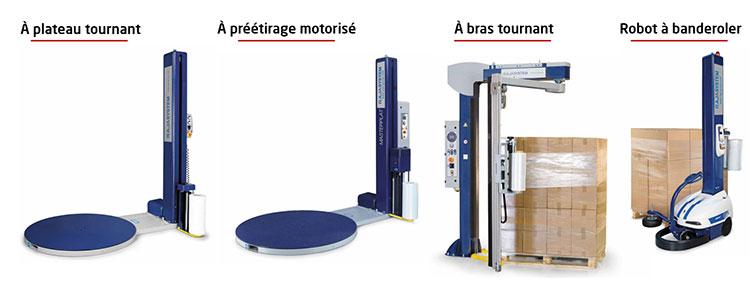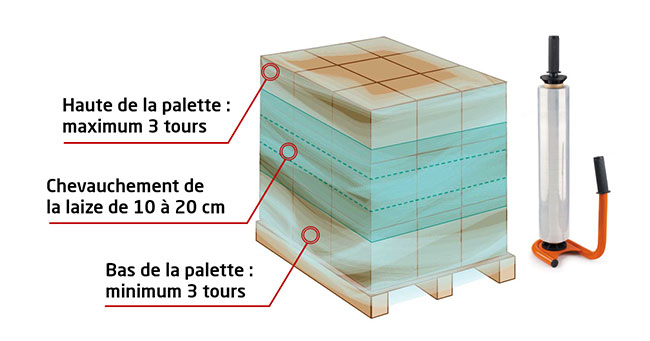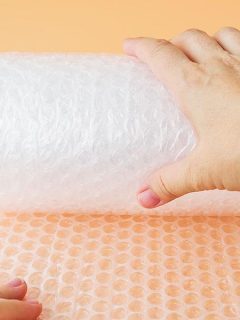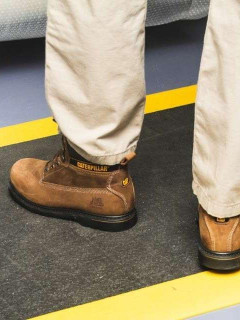We know pallets in many different shapes and sizes, and whether they are made of wood, plastic or cardboard, they all have one thing in common: they are the basis for transporting and protecting your goods. Find out about all the different types of pallets here, learn to distinguish the advantages of each one, and find out how best to prepare them for transport.
su_spacer]
1. What are the dimensions of a pallet?
[Within the pallet family, there are 2 commonly used sizes. On the one hand, you have the American or ISO size of 1200 x 1000 mm. They are mainly used in the USA, Canada and Japan. Beware, however, that they are not suitable for European trucks.
On the
other hand, you also have the European size
of
1200 x 800 mm. In Europe, there is also a slightly smaller version, the mini-pallet, with a size of 800 x 600 mm. Both of these variants of pallets meet the specifications
of
theEuropean Pallet Association. They are generally marked with the EUR or EPAL logo
- American pallet = 1200 x 1000 mm
- European pal let = 1200 x 800 mm
- Mini-pallet = 800 x 600 mm (also available in 600 x 400 mm)
- There are more pallets in circulation in Europe than there are inhabitants: according to the latest figures from 2015, there were 3 billion pallets in the EU. This is equivalent to 4 per inhabitant.
- The pallet is not old; it was patented in the 1930s by George Raymond and his friend Bill House.
- Wooden pallets are made of different types of wood. Oak is often used for the supporting parts. For the other parts, pine wood is used
2. How to choose the number of inlets and the load capacity?
the easiest way to move pallets is to use a pallet truck. Your pallet has a few “inlets” for this purpose. These are notches into which you insert the forks of a pallet truck. You can choose between pallets with 2 or 4 inlets:
| 2 inlets | 4 inlets |
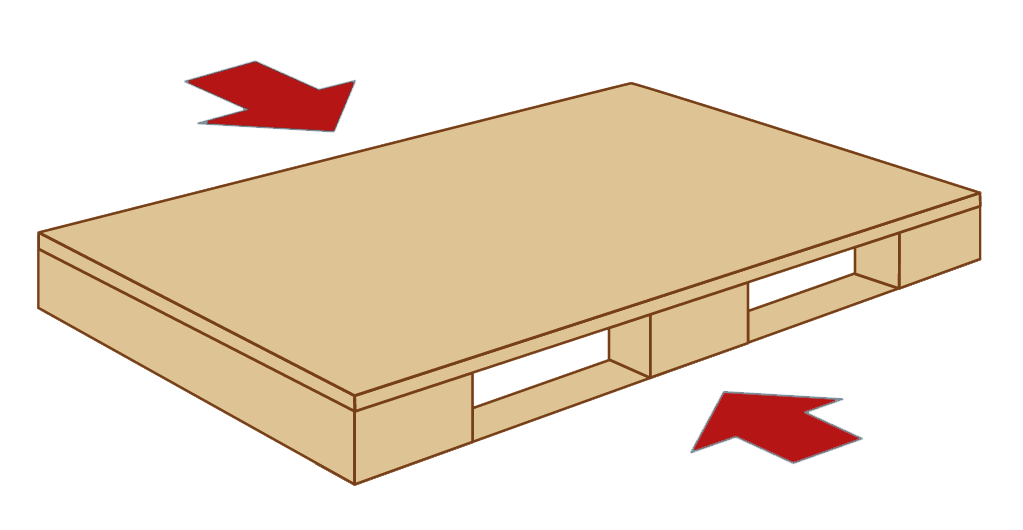 |
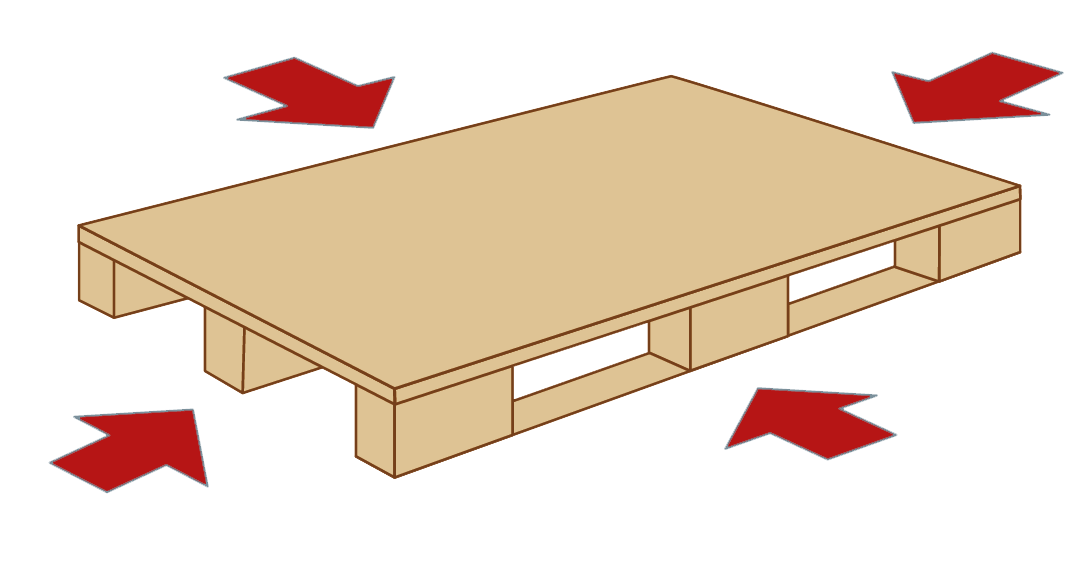 |
| Allows the passage of handling forks only on 2 opposite sides of the pallet. | Allows the passage of handling forks on all 4 sides of the pallet. |
The load capacity is without doubt one of the most important features when choosing a pallet. The load capacity depends very much on what you want to do with your pallet. There are generally 3 situations:
| Static load | Dynamic load | Rack load |
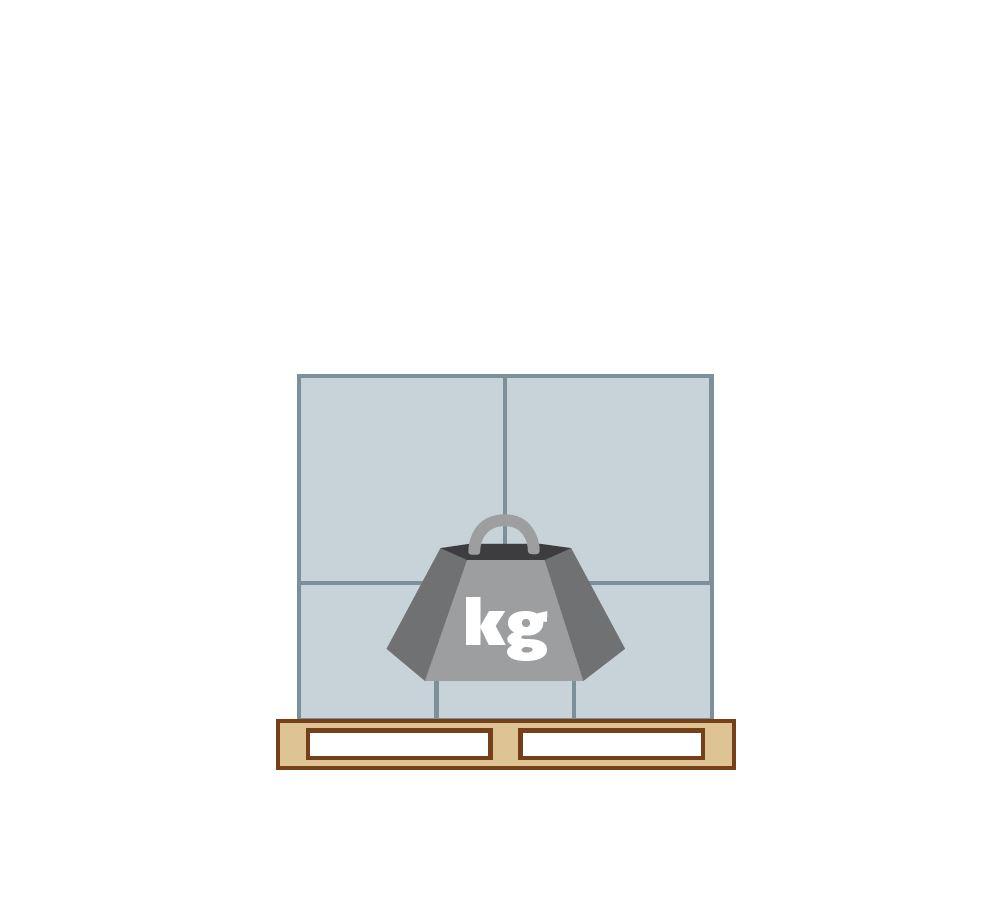 |
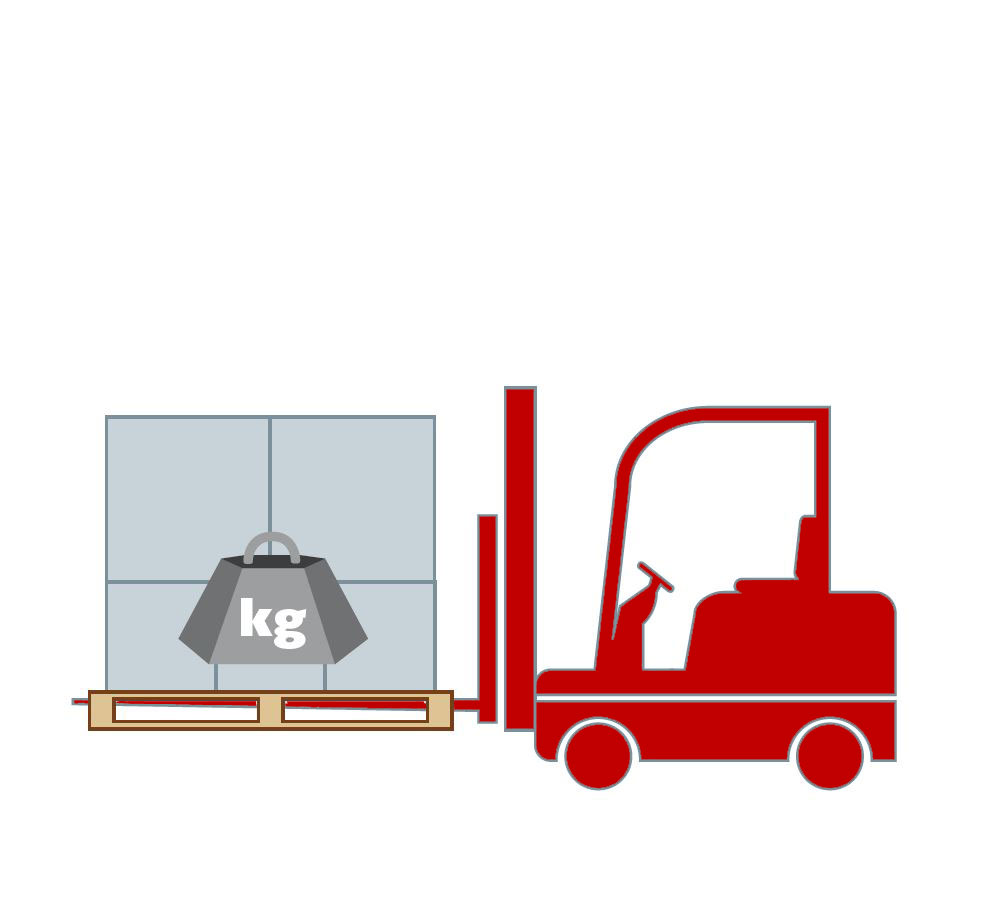 |
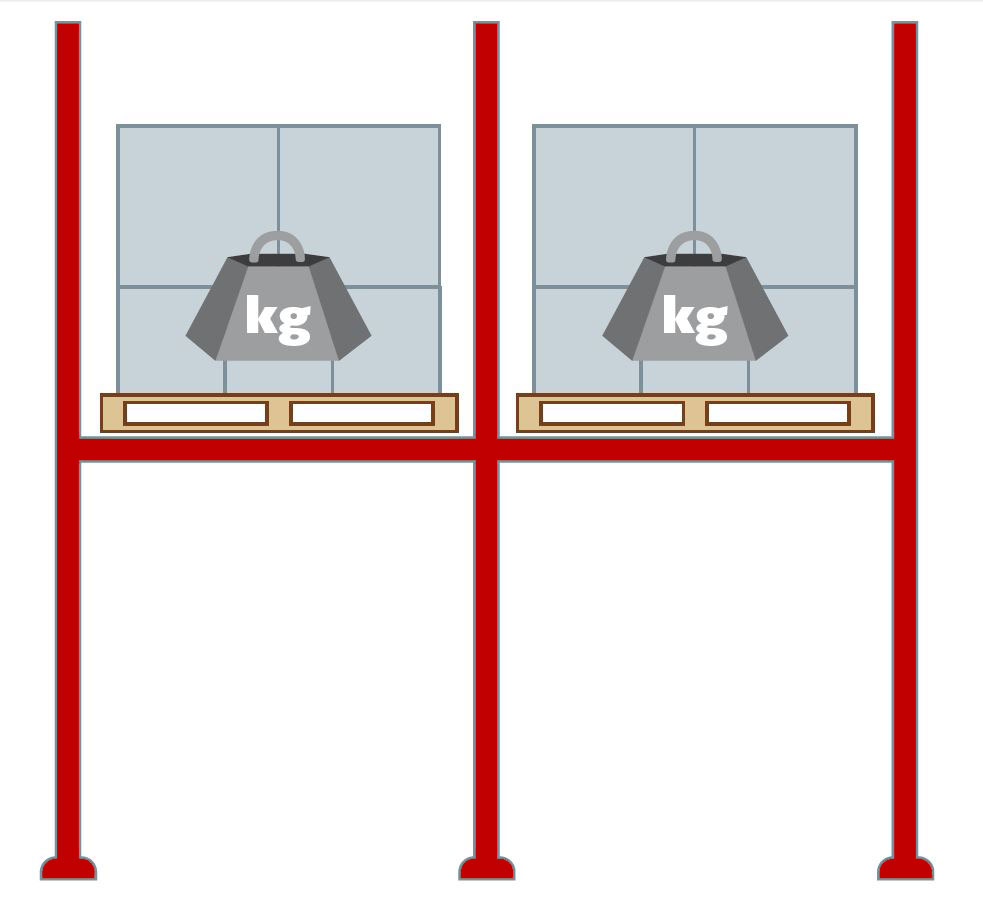 |
| Maximum load that can be carried by a pallet immobilised on the ground. | Maximum load that a pallet can support when transported or moved. | Maximum load a pallet can carry when its long sides are resting on a rack. |
3. What materials are pallets made of?
Pallets are made from one of these materials, each with its own advantages
all these different pallets have several important features in common.For example,they are perfectly stackable (if of the same size).By stacking them,you save a lot of space when storing.Secondly,almost all RAJA pallets are suitable
for
export.They allow you to transport your goods safely to the four corners of the world.Moulded,cardboard and plastic pallets no longer require pest control treatment.With wooden pallets,however,you must take into account the fact that they must comply
with
,
which certifies that they are specially heat treated.These pallets are marked with a herringbone-shaped logotype.
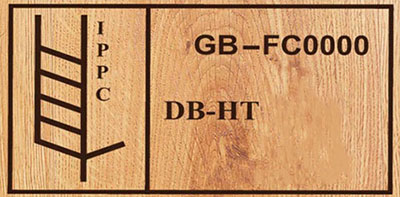
| Moulded pallets . 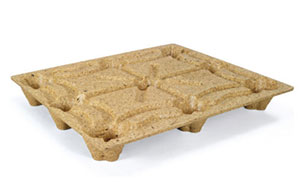 |
economical: the cheapest way ofpalletising your goods. Safe: no nails, splinters or sharp edges. The closed bottom protects your goods from moisture and dirt. Temperature resistant from -65 to +120°C.– Suitable for export and recyclable. |
| Wooden pallet* . 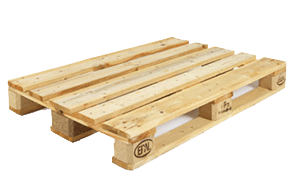 |
robust: gives your load perfect stability (up to 4000 kg for static loads)– Naturally non-slip: suitable for all industries and storage applications– Suitable for export if ISPM15 compliant – The wood has been specially treated so that it is interchangeable worldwide– Recyclable |
| Cardboard pallet . 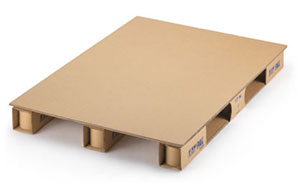 |
lightweight: this is the lightest variant, and as you know: the lighter your pallet, the lower your shipping costs. Time-saving: the RAJA cardboard pallet has a notch in the bottom to quickly secure the stretch film when packing by hand. Suitable for export and recyclable, just like a cardboard box. |
Plastic pallet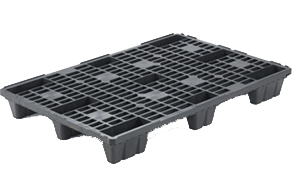 |
hygienic and washable: easy to clean with water– High load capacity: can carry the highest load of all pallet types, up to 7500 kg in static storage– Durable: can be reused several times– Suitable for export and is recyclable |
* Within the family of wooden pallets, there are both ” lost ” and ” exchange
” pallets
. The lost (or disposable) version is cheaper, less durable and must be destroyed after receipt for hygienic reasons. The exchange pallet is stronger and is more often sent from one destination
to another.
4. How to prepare pallets for transport?
Have you found the right pallet for your use, then follow these tips to optimise your stacking and ship your pallet safely
- Never place your crates on the edge of the pallet
- Always place your heaviest crates at the bottom. If there are no major weight differences, simply place your smallest crates at the bottom and the largest at the top.
- Protect your stacked crates with spacers, corner protectors or pallet caps.
- Make sure you use ISPM15 compliant wooden pallets, moulded pallets, cardboard and plastic pallets do not require any additional treatment for export.
- Wrap your entire pallet with stretch film– this protects your goods from water, dust and keeps them secure.
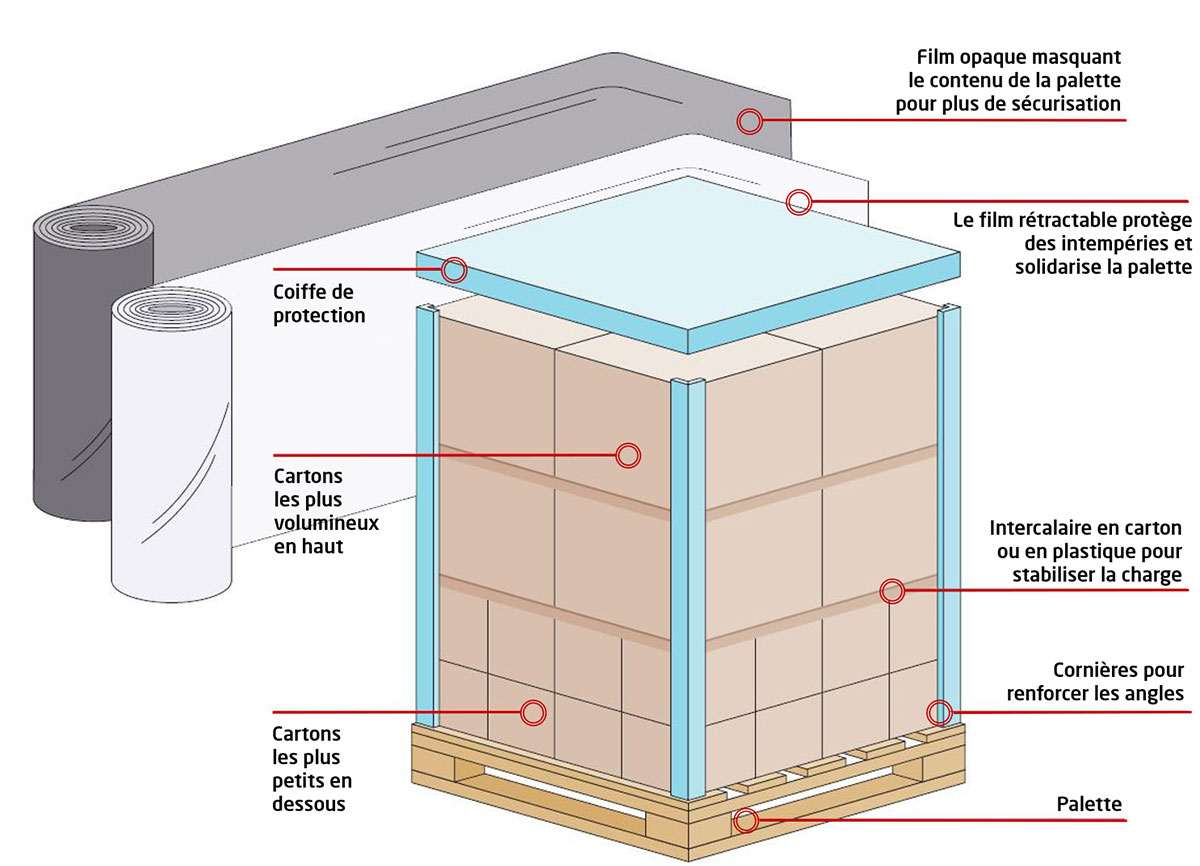
5. How do you stretch wrap a pallet manually or mechanically?
After loading your pallet with goods, it is important to wrap the whole thing with stretch film.This provides greater stability to your load, your goods are better protected from moisture and your pallets can be loaded more easily into trucks and containers. Find out here which technique you should use to wrap your pallet.
►wrapping manually
With this technique, your packer will have to walk around the pallet with a film dispenser, and the physical effort required can be quite tiring in the long run. In addition, one person often cannot match the accuracy of a machine. Although hand wrapping has some limitations, it is still the most commonly used technique in small businesses or companies where a limited number of pallets are handled on a daily basis
su_spacer]
► Filming by machine
You can use a stretch wrapper to wrap your pallets more easily and quickly.This is the best solution if you wrap more than 15 pallets a day.However, your pallet, including the load, should not be more than 2 metres high.A stretch wrapper adapts perfectly to the shapes of your pallet and load.This means that your pallets are wrapped more stably and with the ideal amount of film: never too much and never too little.There are machines available that can handle up to 250 pallets a day.This therefore equates to a saving in both time and productivity.
Filming manually takes much longer than with a machine. On average, it takes a packer about 15 minutes to properly film a pallet. With a machine, it only takes a fraction of that time.
